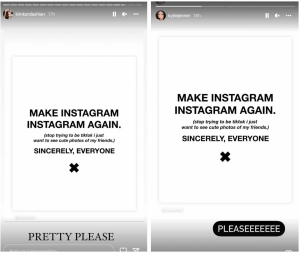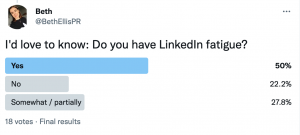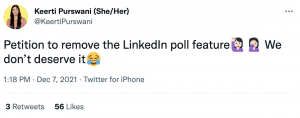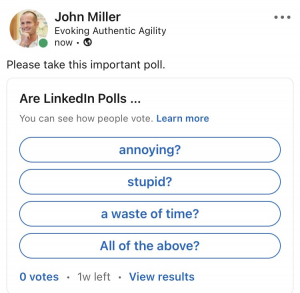This Summer’s PR Winners & Losers
It’s been a seismic summer of sport, heatwaves, Love Island drama and political chaos but in amongst that we’ve enjoyed and endured some rather memorable PR and advertising campaigns.
From Crown Paints to Nike, there’s been an abundance of campaigns that have had tongues wagging and brows raised during the last few months.
So as the summer months draw to a close and the return to school becomes ever more imminent, in this week’s blog, we take a look at this season’s PR winners and losers.
The winners
eBay
eBay has enjoyed a stellar summer in PR terms thanks to its partnership with Love Island, with the online auctioning site supplying the contestants’ outfits through its second-hand clothes section.
The sustainable yet fashionable nature of eBay’s second-hand clothing got the perfect platform for exposure in Love Island, with millions tuning in nightly to watch the smash-hit ITV show and, by virtue getting to see the array of outfits.
They rounded off a successful summer by signing up contestant Tasha Ghouri as their official pre-loved clothing ambassador, something which has been well-received and with Ghouri’s 1.4 million followers, there’s a brilliant opportunity for yet more growth.
Weetabix
The popular breakfast has always been clever in its advertising with the slogan ‘they’ve had their Weetabix’ a permanent and successful fixture since the 1990s.
This summer, Weetabix produced some quite brilliant adverts that coincided with the successful women’s European Championships and appeared in the sports sections of major news sites and on billboards across the country.
A masterclass in copywriting, the ads played on Weetabix’s self-created reputation for providing consumers with great strength and were wonderfully simple.
Against the backdrop of the breakfast cereal’s iconic yellow colour scheme, Weetabix produced clever slogans such as “They had theirs” in response to the semi-final win and “crunch time (just add milk)” prior to the final.
This is a genius piece of copywriting that was playful yet latched onto the growing support for the women’s team and interest in the tournament. A brilliant campaign that captured the mood of a hopeful, and eventually ecstatic, nation.
Nike
As the England National Team’s official kit manufacturer, Nike’s slick and rather magnificent marketing team sprang into action to produce a campaign that was simply jaw-dropping.
In the build-up to the tournament the sports brand created an incredible campaign that was the perfect PR stunt for the women’s game.
Members of the Lioness squad were reflected onto Dover’s white cliffs with the powerful accompanying tagline “You’ve Never Seen England Like This” … and they certainly weren’t wrong.
Tower Bridge and Battersea Power Station were among the London landmarks lit up with England players such as Leah Williamson and Lucy Bronze featuring, with the Nike pledge ‘Never Done’ promoting their winning mindset.
Nike accompanied this incredible campaign with an inspiring advert that highlighted their commitment to the women’s game.
This campaign is expected to help the sports brand meet one of its key long-term PR aims, which has been to better connect with women.
The losers
TotalJobs
TotalJobs is an online job board that’s been considered redundant by many on social media for its apparently rage-inducing advert that’s been tarnishing their YouTube experience.
The ad which has generally been confined to online video and streaming platforms has been met with a barrage of criticism and led some to take the stance of “actively boycotting [TotalJobs] because that advert is driving [them] insane.”
I bet this lass off the Total Jobs advert is a chuffin’ nightmare to work with. There’s a fine line between confidence and cockiness. pic.twitter.com/aUW7FrJXuX
— Sal 🎄 (@salhypes) July 30, 2022
This particular Twitter user was one of many on the site that commented on the ‘smugness’ of the woman who got the job.
Another commented on how the “creepy, long stare the girl does in the TotalJobs ad on YouTube is enough to put me off using their service.”
It seems that TotalJobs have missed the mark with this campaign and potentially done a bit of damage to their reputation, purely through a perceivably irritating advert.
PR-wise, Instagram has had a rather abysmal summer and sadly it’s been a problem of their own making.
The rise of TikTok has led the Meta-owned site scramble to incorporate videos into its feeds and adjusted its algorithm to include more of its reels on users’ feeds.
This has been met with a real backlash by users who are fed up with seeing reels at the expense of their friends and family’s photos, which led to 21-year-old photographer Tati Bruening starting a powerful ‘Make Instagram, Instagram Again’ campaign.
This campaign garnered a lot of support and among its proponents were Kim Kardashian and Kylie Jenner who shared the graphic on their stories which would’ve reached a large proportion of their 700 million followers.
Back in 2018 $1.3 billion was wiped off the value of Snapchat after Jenner tweeted that she no longer used the app, so Instagram knew that they had to act to avoid a similar disaster.
Loser or winner?
Crown Paints
Crown Paints is an interesting one and plays into an issue that my colleague Jess raised in her recent blog regarding whether all publicity is always good publicity.
In the past, the paint company won exposure through being a shirt sponsor for a football club who play in Anfield during the 1980s and generally have operated low-profile, safe PR campaigns.
However, its risqué ‘Life Stories’ advertising campaign has ensured Crown Paints sits firmly within the contemporary public conscience.
Focusing on the couple ‘Hannah and Dave’ and how they’ve navigated through their relationship, the ad has received numerous complaints and could potentially be investigating by the Advertising Standards Authority.
Many, such as comedian Jenny Éclair, took to social media to voice their displeasure at Crown Paints’ commercial, particularly, the lyrics “now a baby’s coming and they don’t know what it is” and “Hannah’s hoping for a girl, Dave’s just hoping that it’s his.”
Hey @crownpaints get that offensive baby ad off air – what were you thinking !!!? What on earth possessed you?
— Jenny Eclair (@jennyeclair) August 10, 2022
The ad has been labelled “offensive”, “misogynistic” and a “serious error of judgement”.
Éclair added that it essentially insinuated that Hannah had “conned” Dave into fatherhood.
However, others enjoyed the ad and dismissed criticism as simply an over-sensitive reaction to a humorous take on modern relationships.
Whatever your thoughts on the advert, arguably Crown Paints’ brand awareness has never been higher and there’s no denying that it’s wedged the Darwen-based business firmly in people’s minds.
So, have they had a PR disaster or triumph this summer? I guess that’s up to you but I’d say they’ve snuck into the triumph realm purely by winning unprecedented brand awareness.













